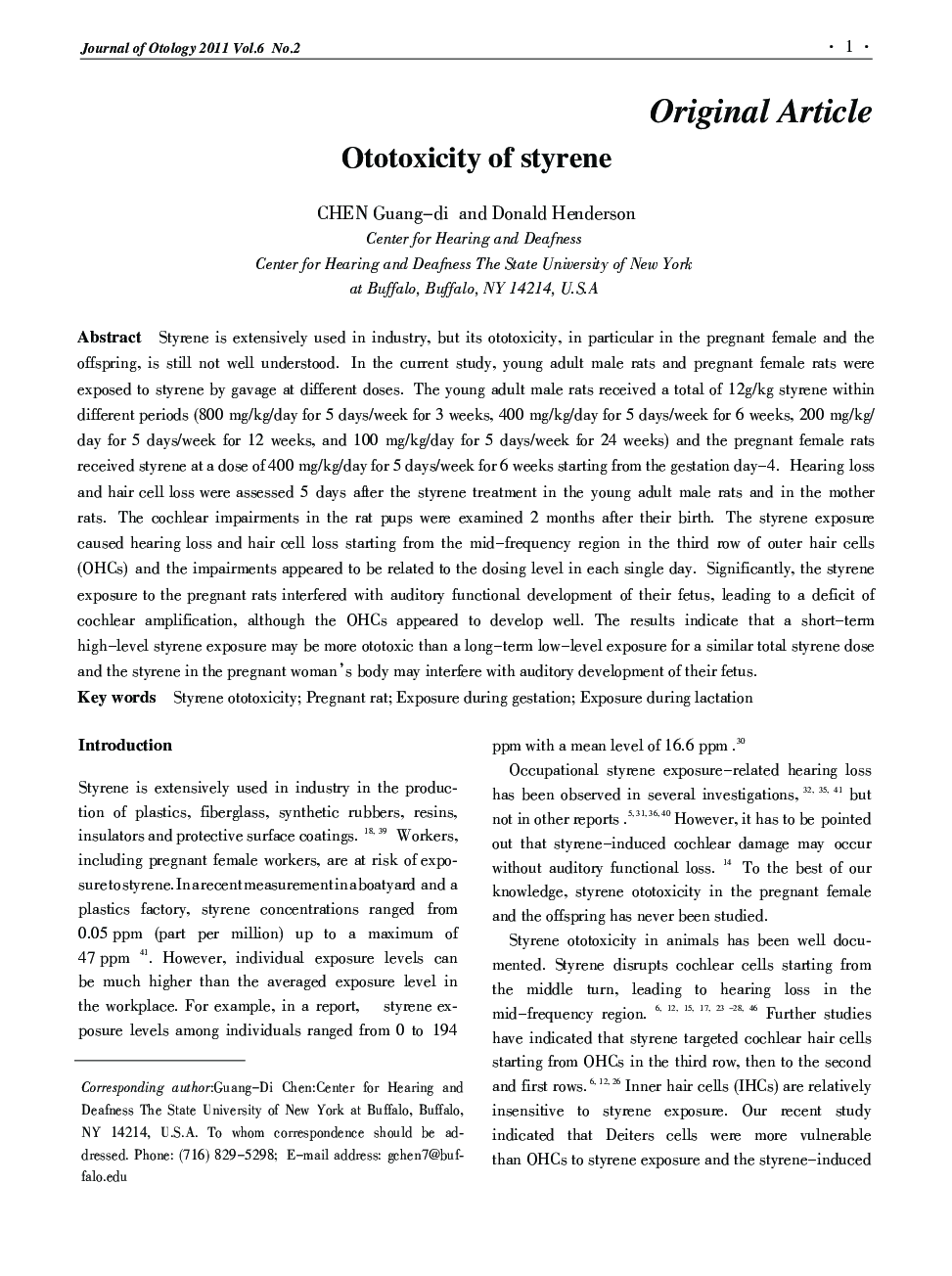| Article ID | Journal | Published Year | Pages | File Type |
|---|---|---|---|---|
| 4116881 | Journal of Otology | 2011 | 9 Pages |
Styrene is extensively used in industry, but its ototoxicity, in particular in the pregnant female and the offspring, is still not well understood. In the current study, young adult male rats and pregnant female rats were exposed to styrene by gavage at different doses. The young adult male rats received a total of 12g/kg styrene within different periods (800 mg/kg/day for 5 days/week for 3 weeks, 400 mg/kg/day for 5 days/week for 6 weeks, 200 mg/kg/day for 5 days/week for 12 weeks, and 100 mg/kg/day for 5 days/week for 24 weeks) and the pregnant female rats received styrene at a dose of 400 mg/kg/day for 5 days/week for 6 weeks starting from the gestation day–4. Hearing loss and hair cell loss were assessed 5 days after the styrene treatment in the young adult male rats and in the mother rats. The cochlear impairments in the rat pups were examined 2 months after their birth. The styrene exposure caused hearing loss and hair cell loss starting from the mid–frequency region in the third row of outer hair cells (OHCs) and the impairments appeared to be related to the dosing level in each single day. Significantly, the styrene exposure to the pregnant rats interfered with auditory functional development of their fetus, leading to a deficit of cochlear amplification, although the OHCs appeared to develop well. The results indicate that a short–term high–level styrene exposure may be more ototoxic than a long–term low–level exposure for a similar total styrene dose and the styrene in the pregnant woman’s body may interfere with auditory development of their fetus.
